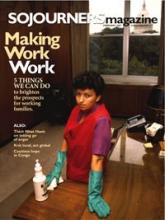Dozens of career-ladder programs have started up around the country over the last 10 years or so. All attempt to counteract the national trend toward low-skill, low-wage jobs by identifying the pathways that people might follow to gradually advance into better jobs. The programs clarify the training or education required to move to the next step on the ladder, and they provide workers with the support services and financial aid they need to complete the training.
Career-ladder programs are helping nurse aides become licensed practical nurses, clerical workers become information technology workers, and bank tellers become loan officers. The VHA Health Foundation, for example, is funding career-ladder initiatives in several cities to enable entry-level workers in hospitals and other health care institutions to advance into technical positions. Shoreline Community College in a suburb of Seattle is working with employers and people moving off welfare to create career ladders in four occupational clusters. As soon as students have enough skills to begin an entry-level job in one of the target occupations, they combine work and continuing education to advance into better jobs.
In some cases the ladders existed already, but employees and potential employees needed assistance in using them. In other cases new positions had to be created to fill in gaps between rungs, and employers had to be educated about the advantages of doing so. In all cases the programs are providing crucial links between employers and workers—and usually links to the community beyond. Most career-ladder programs are partnerships involving some combination of community colleges, unions, community organizations, and employers. Some also receive a great amount of support from government workforce-development agencies, while others operate independently.
Read the Full Article

